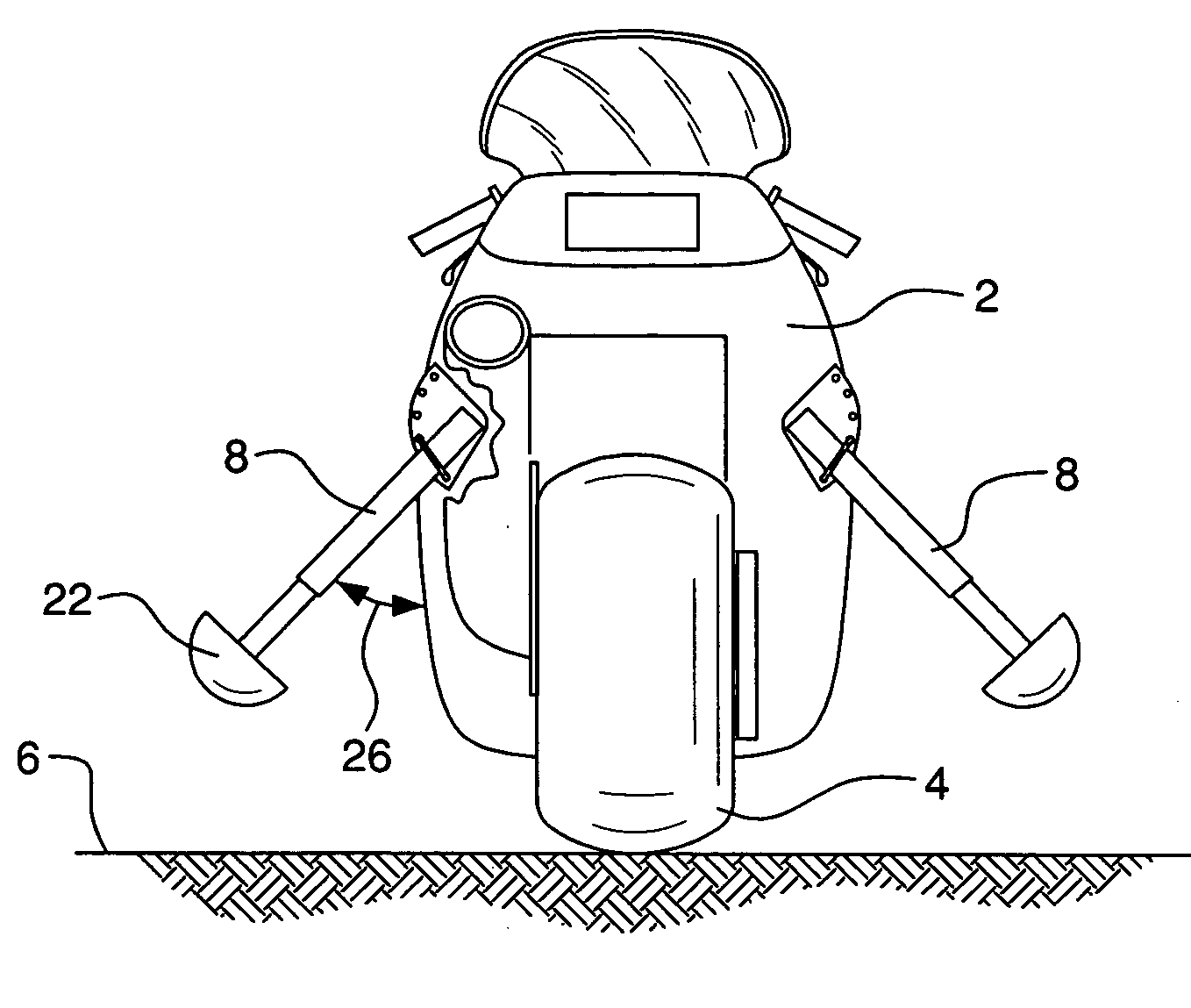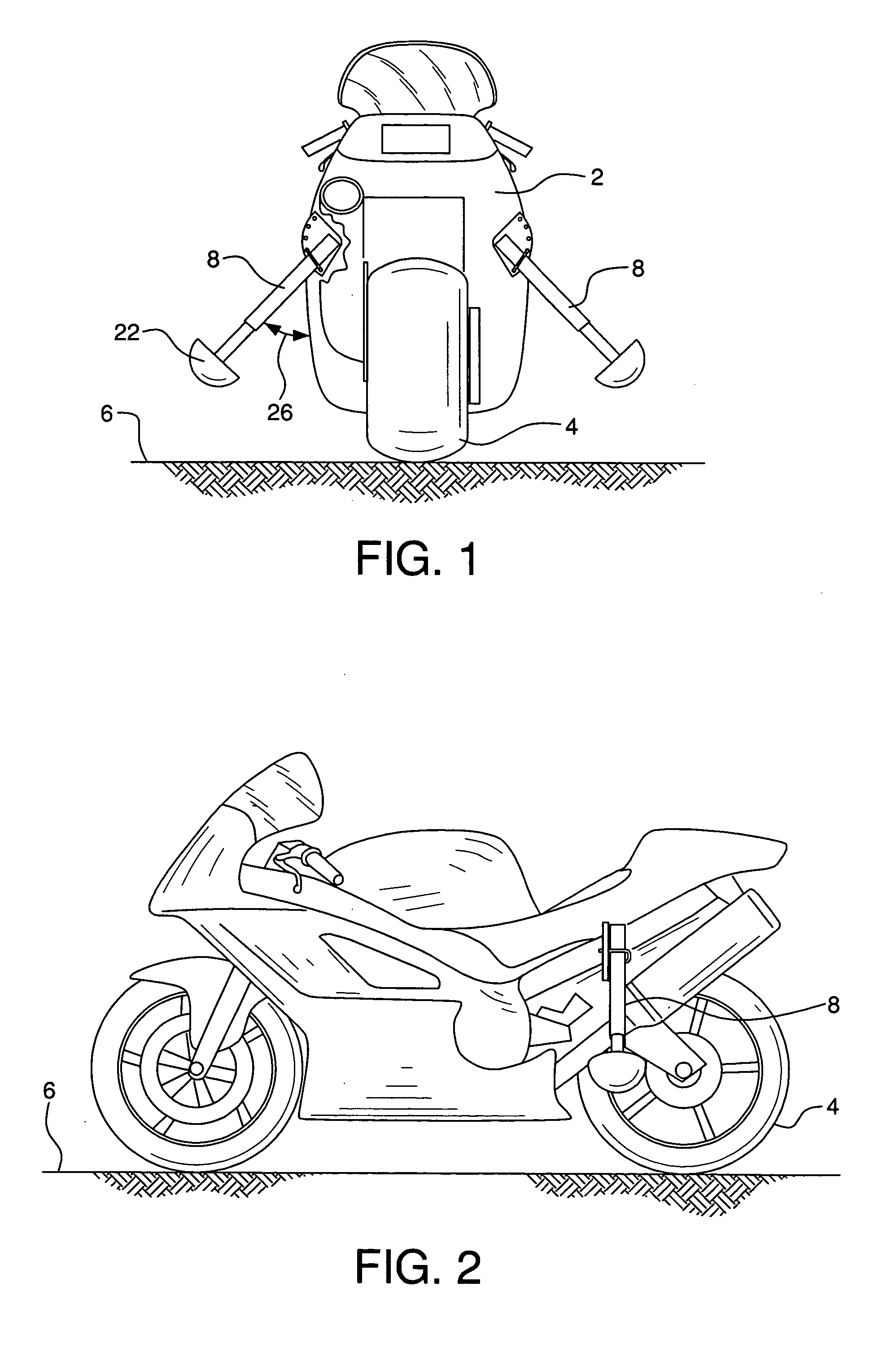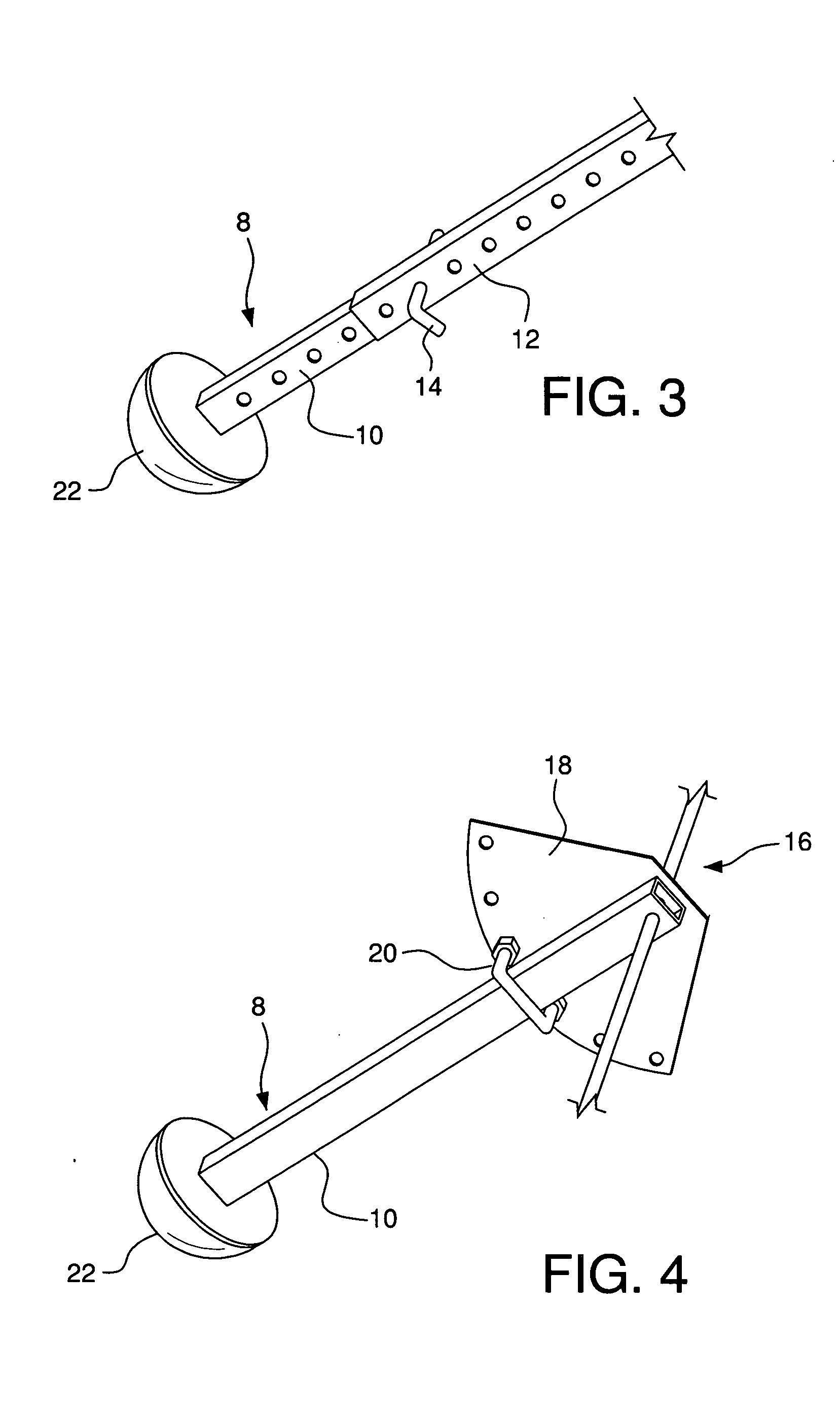Apparatus and method for stabilizing a motorcycle during turning maneuvers
a technology of turning maneuvers and apparatus, applied in the direction of vehicle maintenance, cycle equipment, cycle stands, etc., can solve the problems of not allowing the rider to experiment and practice, preventing a motorcycle so equipped from reaching the speed and maneuverability normally, and reducing the effect of initial conta
- Summary
- Abstract
- Description
- Claims
- Application Information
AI Technical Summary
Benefits of technology
Problems solved by technology
Method used
Image
Examples
example
[0061] Though an embodiment of the present invention may include only one support member per side of a motorcycle (or other two-wheeled, single tread vehicle), in an example of the present invention, this inventor has modified a 1992 Kawasaki EX-500 with provision of the Motorcycle Turning Stabilization System (MTTS) comprising of a Version I support member at the front left of the motorcycle frame, and both a Version I and II support member at the rear left. Extensive testing of the prototype of the present invention included the following process:
[0062] While at rest the motorcycle lean angle was set at both front and rear support members at a rather conservative (small) lean angle that the rider was very comfortable with. The motorcycle was then ridden around a closed circular course comprising of left hand corners. As the motorcycle was ridden into the corner and the “countersteering” input initiated by the rider, the motorcycle gently leaned into the corner at the preset great...
PUM
 Login to View More
Login to View More Abstract
Description
Claims
Application Information
 Login to View More
Login to View More - R&D
- Intellectual Property
- Life Sciences
- Materials
- Tech Scout
- Unparalleled Data Quality
- Higher Quality Content
- 60% Fewer Hallucinations
Browse by: Latest US Patents, China's latest patents, Technical Efficacy Thesaurus, Application Domain, Technology Topic, Popular Technical Reports.
© 2025 PatSnap. All rights reserved.Legal|Privacy policy|Modern Slavery Act Transparency Statement|Sitemap|About US| Contact US: help@patsnap.com



